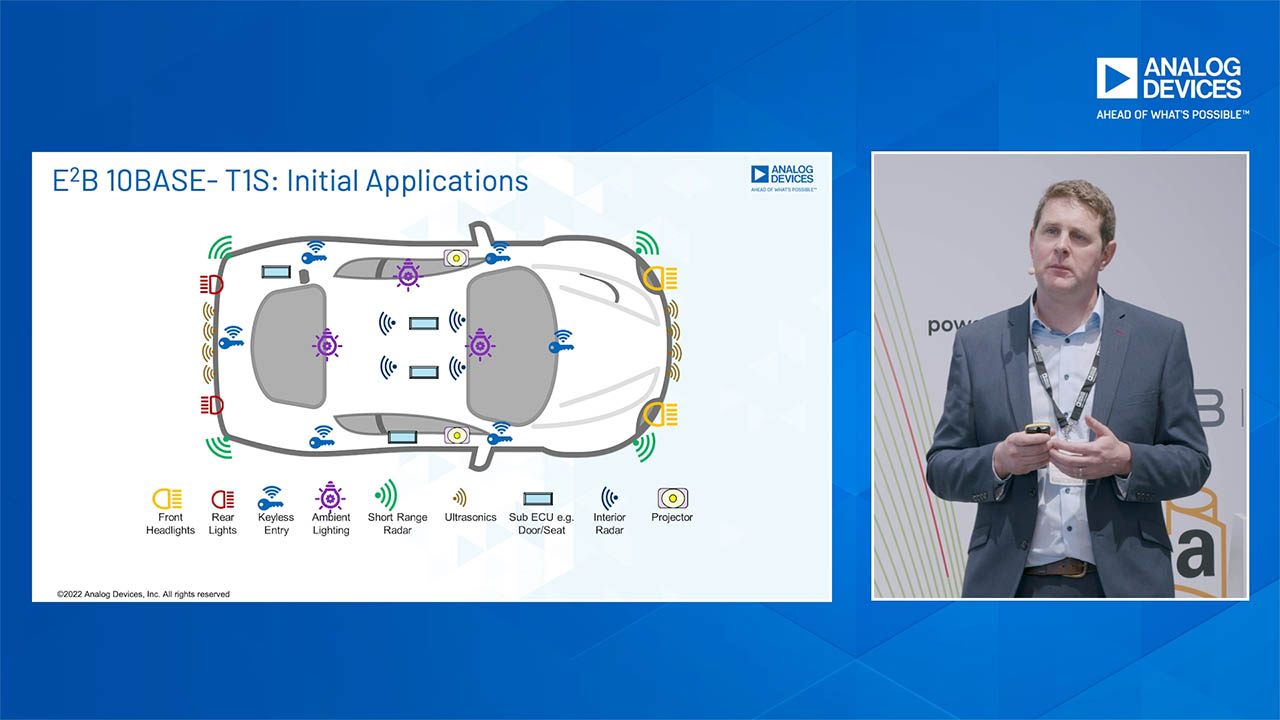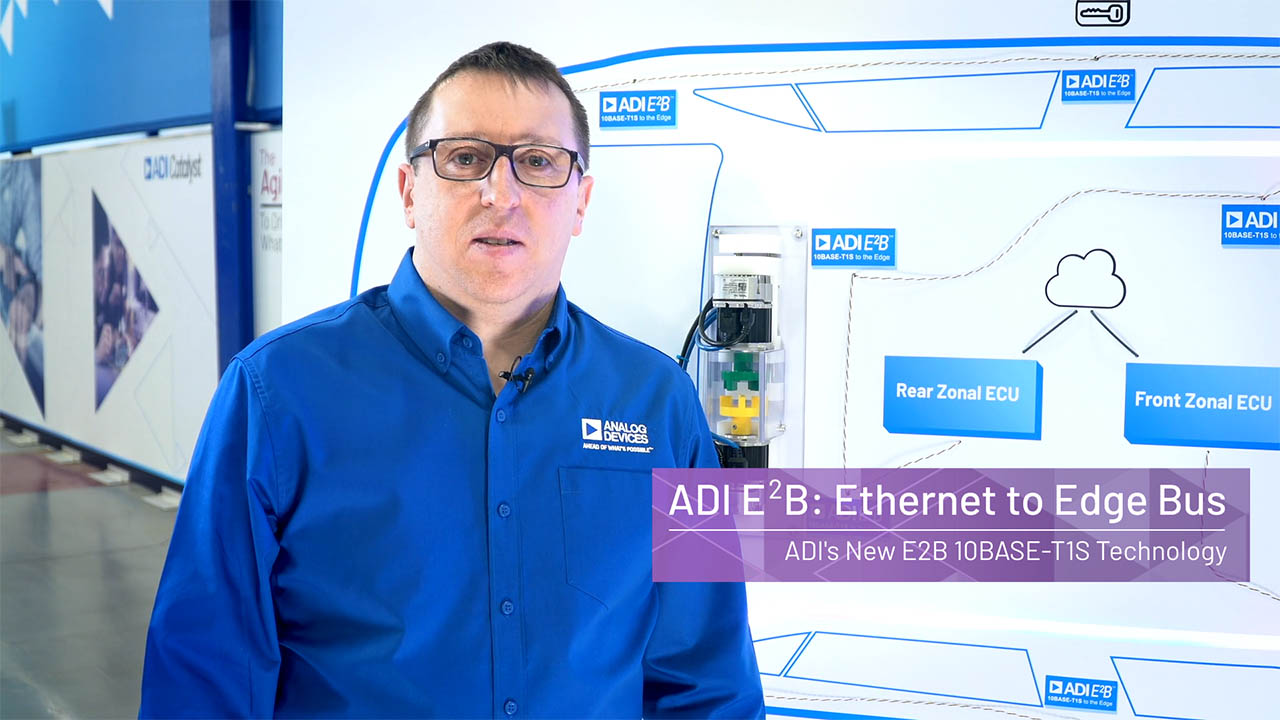
Automotive Ethernet Connectivity
Extending automotive Ethernet connectivity to the edge is a key enabler of in-vehicle networking required for next-generation zonal architectures and software-defined vehicles. Analog Devices, Inc. (ADI’s) solutions extend Ethernet connectivity all the way to the edge nodes and thus eliminate the need for bridging functions, providing a fully optimized automotive Ethernet architecture. Our solutions can be leveraged to enable advanced systems for personalization, autonomy, safety, and electrification applications.
Explore Applications in Automotive Ethernet Connectivity
10BASE-T1S Ethernet to Edge Bus (E2BTM)
10BASE-T1S E2BTM solutions enhance software-defined vehicles by removing software on edge nodes. ADI provides drivers, evaluation kits, design tools, and development tools to help customers seamlessly integrate our E2B solutions into next-gen automotive platforms.
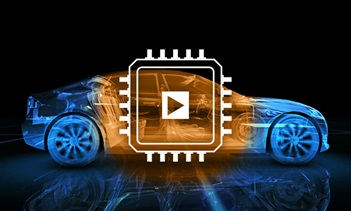
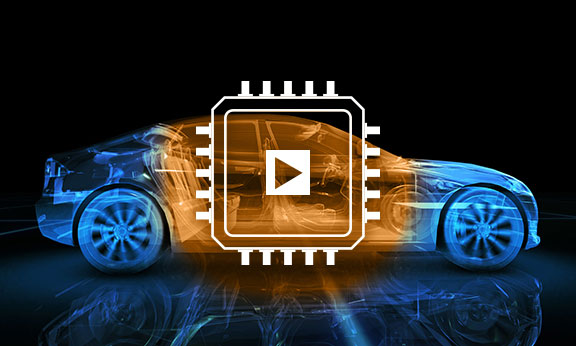
10BASE-T1S Ethernet to Edge Bus (E<sup>2</sup>B<sup>TM</sup>)
10BASE-T1S E2BTM solutions enhance software-defined vehicles by removing software on edge nodes. ADI provides drivers, evaluation kits, design tools, and development tools to help customers seamlessly integrate our E2B solutions into next-gen automotive platforms.

10BASE-T1S MAC-PHY Solutions
10BASE-T1S MAC-PHY is a high-performance Ethernet physical layer (PHY) product with an integrated media access controller (MAC). ADI offers drivers, evaluation kits, and design and development tools to support integration of MAC-PHY solutions into next-gen automotive platforms.
Enabling Zonal Architectures
Automotive Ethernet connectivity has paved the way for next-generation zonal architecture. It eliminates gateways and simplifies the wiring harness by connecting edge sensors and actuators based on location rather than function. This reduces vehicle weight, aiding in better fuel efficiency.
Expanding Ethernet connectivity to the edge is a key enabler of zonal architecture and the demands that go with it: More bandwidth, reduced system complexity, and increased scalability. ADI’s optimized Ethernet-to-the-edge solutions also unlock connectivity features, such as real-time functional upgrades and remote diagnostics over-the-air (OTA), which OEMs can implement to differentiate their design.
ADI’s 10BASE-T1S transceivers are compatible with a broad spectrum of automotive applications, enabling automotive OEMs to drive zonal architecture innovations with improved connectivity performance. To simplify the transition toward software-defined vehicles, our novel 10BASE-T1S E2BTM solution is designed to streamline the system integration by providing all hardware edge node by centralizing software.
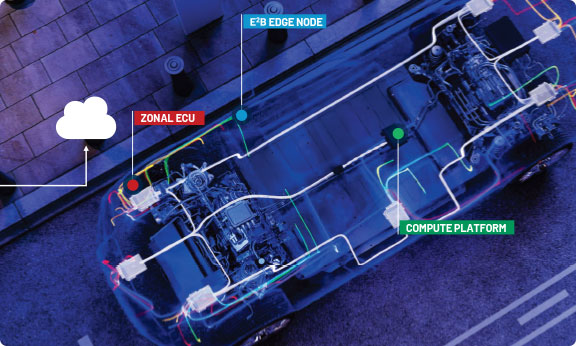
Learn More
{{modalTitle}}
{{modalDescription}}
{{dropdownTitle}}
- {{defaultSelectedText}} {{#each projectNames}}
- {{name}} {{/each}} {{#if newProjectText}}
-
{{newProjectText}}
{{/if}}
{{newProjectTitle}}
{{projectNameErrorText}}









